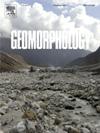New insights into geomorphological and tectonic processes in the Gulf of Tehuantepec and constraints on tsunami generation
IF 3.1
2区 地球科学
Q2 GEOGRAPHY, PHYSICAL
引用次数: 0
Abstract
Earthquakes can cause tsunamis by rapidly deforming the seafloor or triggering submarine slope failures. The intraplate earthquake in the Gulf of Tehuantepec on September 8, 2017 generated a tsunami that did not match the predicted tsunami run-up heights and distributions, indicating a possible additional slope failure. An oceanographic expedition, TEHUANTEPEC19, was carried out between May and June 2019, onboard the El Puma vessel, during which bathymetric, magnetic, and high-resolution seismic data were gathered and evaluated together with pre-existing seismic data. The results document a wide range of erosion-deposition processes in the region including past submarine landslides. However, the mapped landslide deposits are already heavily overprinted by gully formation and sedimentation, ruling out that submarine slumping influenced the recent tsunami after the 2017 Tehuantepec earthquake. Other geological processes, such as subsidence and extension of the forearc, large numbers of faults, and the subduction of the Tehuantepec Ridge, suggest that the Tehuantepec shelf is dominated by subduction erosion. This process may have deformed the continental shelf more complexly than assumed for the earthquake-derived tsunami model, explaining the mismatch between modeled and observed tsunamis. Our findings indicate that slope failure-induced tsunamis can play a role on the coasts of Central America, but this was not the case for the 2017 Tehuantepec earthquake.
求助全文
约1分钟内获得全文
求助全文
来源期刊

Geomorphology
地学-地球科学综合
CiteScore
8.00
自引率
10.30%
发文量
309
审稿时长
3.4 months
期刊介绍:
Our journal''s scope includes geomorphic themes of: tectonics and regional structure; glacial processes and landforms; fluvial sequences, Quaternary environmental change and dating; fluvial processes and landforms; mass movement, slopes and periglacial processes; hillslopes and soil erosion; weathering, karst and soils; aeolian processes and landforms, coastal dunes and arid environments; coastal and marine processes, estuaries and lakes; modelling, theoretical and quantitative geomorphology; DEM, GIS and remote sensing methods and applications; hazards, applied and planetary geomorphology; and volcanics.
 求助内容:
求助内容: 应助结果提醒方式:
应助结果提醒方式:


